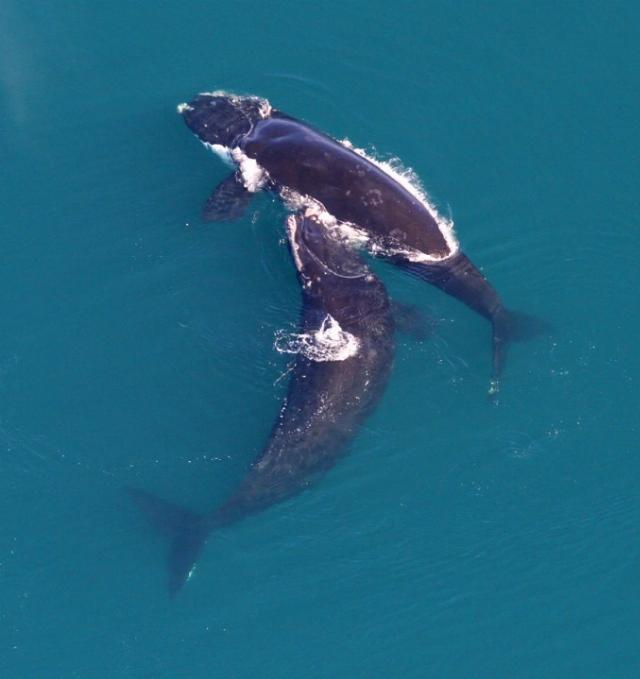Offshore wind farms are detrimental to whales
Since 2016, more than 200 humpback whales have died and been stranded on beaches along the East Coast, according to the National Oceanic and Atmospheric (NOAA). In fact, NOAA is so concerned about the sheer number of dead humpback whales in this region that it has labeled the situation an “unusual mortality event.”
Likewise, NOAA has declared an “unusual mortality event” regarding the mysterious mass deaths of the critically endangered North Atlantic right whale along the East Coast. As NOAA notes, more than 125 North Atlantic right whales have been found “dead, seriously injured, or sublethally injured” from 2017 to 2024.
Interestingly, the drastic spike in whale deaths along the U.S. East Coast began exactly when offshore wind farm companies began using geotechnical and site characterization surveys in this region of the Atlantic Ocean.
Geotechnical and site characterization surveys are prerequisites for the construction of massive offshore wind farms that rely on the use of sonar waves to map the ocean floor. However, these activities, which require an Incidental Harassment Authorization from NOAA, have also been shown to wreak havoc on whales.
According to Cindy Zipf, executive director of Clean Ocean Action, “It is plausible to question whether offshore wind pre-construction activities, which are happening concurrently in this region, are a contributing factor in these deaths.”
She added that this many whale deaths in this short of a timespan is “unprecedented” and notes that preconstruction activities have already led to substantially “more ships and vessels in the area, which increase potential ship strikes, and sonar can deafen or disorient whales, leading them into the path of oncoming vessels.”
 Clean Ocean Action is not the only environmental group raising concern about the negative potential impacts that offshore wind farm construction activities can produce on whales.
Clean Ocean Action is not the only environmental group raising concern about the negative potential impacts that offshore wind farm construction activities can produce on whales.
In December 2021, Save the Whales, along with nine other organizations, sent a letter to the Bureau of Ocean Energy Management (BOEM), stating, “There is reason for grave concern” because offshore wind farms use equipment that “emit sounds of the same sound frequencies as the calls of the North American Right Whales.”
The letter also documents that “BOEM, under Biden-Harris Administration, continues to decline to make an Environmental Impact Statement (EIS) prior to lease sale of ocean areas, even knowing that such lease sales, with 100% certainty, will result in sea floor exploration/SAP activities requiring ensonification, and knowing that, based on the sound frequency at which NARW communicate, adverse effects on the remaining NARW population of such sound-producing site-characterization activities are highly likely.”
What’s more, even the NOAA admits that “ocean noise from human activity can alter whale behavior, stress the animals, and in some cases, cause disorientation or hearing loss.”
The mainstream media has bent over backwards to convince the general public that offshore wind farms do not present a clear and present danger to whales. In late 2023, the Associated Press released an article titled, “Contrary to politicians’ claims, offshore wind farms don’t kill whales.” However, this article deserves a giant asterisk because it all hinges on this sentence: “Experts say there’s no evidence that limited wind farm construction on the Atlantic Coast has directly resulted in any whale deaths.” Notice the use of the word “directly” in the sentence above. By inserting that single word, the authors would like you to believe that the whale deaths since the start of these construction projects is not the “direct” reason for the rise in whale deaths, but rather it is coincidental, an indirect result.
That is ludicrous. We know that the construction of these mega-sized offshore wind farms happens to coincide with a steep rise in whale deaths in the exact same area where the construction and pre-construction activities are taking place.
Although correlation does not automatically lead to causation, in this particular instance, it sure seems likely that there is a connection between the rapid rise in whale deaths and the pre-construction and construction activities of the offshore wind farms along the U.S. East Coast.
Chris Talgo (ctalgo@heartland.org) is editorial director at The Heartland Institute.
Image: National Marine Sanctuaries
FOLLOW US ON
Recent Articles
- New York Greenlights Quarantine Camps
- Reality Check for Democrats
- A MAGA Siege of the Democrats’ Deep State
- Why Incel and 4B Culture Matter
- Defending Donald Trump: A Response to Jeffrey Goldberg and The Atlantic on the Signal Leak
- Are Judges Complicit in Lawfare?
- Deep Dive: The Signal Chat Leak
- Mark Steyn’s Reversal of Fortune
- Where We Need Musk’s Chainsaw the Most
- Trump Is Not Destroying the Constitution, but Restoring It
Blog Posts
- A Ph.D. in ‘Molecular and Cell Biology’ shows the difference between credentials and knowledge
- Nasty Venezuelan migrant who flashed taxpayer dollars and urged squatting, gets thrown out
- Watch white leftist women’s brains breaking—and repairing—in real-time
- The last, best hope ...
- In Pennsylvania, are Democrats stealing votes again?
- Knife control comes to the U.K.: Prime Minister Starmer bans Ninja swords
- This Tuesday, Wisconsonites must vote for Brad Schimel for the State Supreme Court
- Was Vietnam worth the cost?
- Democrats should get a clue from the Palestinians who are now marching against Hamas
- Trump takes on Fauxahontas's brainchild
- Consumer Sentiment Survey: This too shall pass
- If they only had knife control....
- Newsom and Walz struggle to appear normal
- Anti-Trump lawfare: yes, it's a conspiracy
- Criminal attack? You're on your own.






